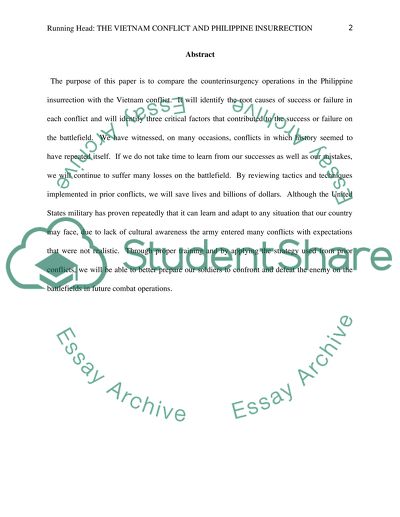Cite this document
(“Ompare/Contrast Vietnam Conflict and Philippine Insurrection Essay”, n.d.)
Retrieved from https://studentshare.org/military/1454356-compare-contrast-vietnam-conflict-and-philippine
Retrieved from https://studentshare.org/military/1454356-compare-contrast-vietnam-conflict-and-philippine
(Ompare/Contrast Vietnam Conflict and Philippine Insurrection Essay)
https://studentshare.org/military/1454356-compare-contrast-vietnam-conflict-and-philippine.
https://studentshare.org/military/1454356-compare-contrast-vietnam-conflict-and-philippine.
“Ompare/Contrast Vietnam Conflict and Philippine Insurrection Essay”, n.d. https://studentshare.org/military/1454356-compare-contrast-vietnam-conflict-and-philippine.


